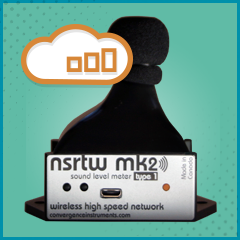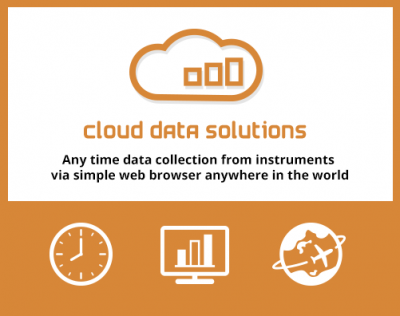
The cloud now empowers the data reporting and management needs of datalogger users, thanks to Convergence Instrument’s (CI) Cloud-Data-Solutions. The service enables all of CI’s Wi-Fi-enabled dataloggers to report captured data straight to the cloud and offers multiple datalogger benefits for customers. Users can access recorded data from anywhere in the world at any time using a simple web browser, and receive email alerts when sound or vibration levels have passed predetermined thresholds.
A few simple steps are all that is needed to configure the Convergence Instruments Wireless Sound Level Meter Data Logger (NSRTW_mk2) to the cloud and reap the benefits of more efficient data management, as well as receive alarms in the form of emails.
NSRTW_mk2, the second generation of CI’s generation of Wi-Fi-enabled, smart integrating sound-level meter/datalogger, includes a digital MEMS microphone, an accurate date/time clock, a non-volatile 128 Mb recording memory and wireless connectivity.
Operation
 Step-by-step instructions are available for the configuration of an instrument to use the cidatasolutions.com cloud service. The web page for the instrument cloud configuration contains settings for the measurements, the Wi-Fi connection and the email alerts.
Step-by-step instructions are available for the configuration of an instrument to use the cidatasolutions.com cloud service. The web page for the instrument cloud configuration contains settings for the measurements, the Wi-Fi connection and the email alerts.
[ DOWNLOAD THE PDF CLOUD INSTRUMENT SETUP ]
Measurement Settings
These include five parameters and they are easy to configure:
Wi-Fi Connection Settings
Email Alert Settings
The NSRTW_mk2 can send email alerts when the measured parameter crosses an adjustable threshold, as well as when the battery is dying. To set up email alerts, the following parameters must be set:
With this degree of peerless connectivity, datalogger applications are more transparent than ever before.
Convergence Instruments 2024 © All Rights Reserved | Privacy Policy and User Agreement | Terms and Conditions | Limited Warranty